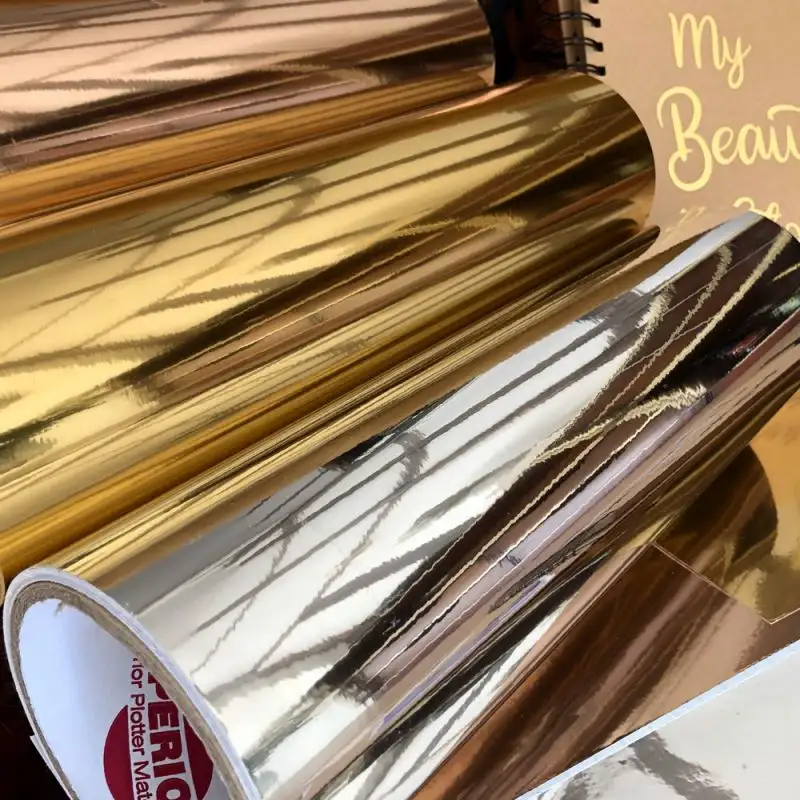When you invest in high-quality materials like Foil Direct plotter films, proper storage becomes just as important as proper application. These precision-engineered materials can deliver exceptional results for years when cared for correctly, but improper storage can compromise their performance before they ever reach your cutting mat. Understanding the fundamentals of material preservation will ensure your films remain in perfect condition, ready to perform flawlessly when inspiration strikes for your next project.
Mastering the Climate Control Equation
The environment where you store your plotterfolien significantly impacts their long-term viability. Temperature and humidity are the two critical factors you need to manage carefully. Ideally, films should be stored in a climate-controlled space maintained between 60°F and 80°F (15°C-27°C). Extreme heat can cause the adhesive to prematurely cure or become overly aggressive, while cold temperatures may make the vinyl brittle and difficult to work with. Humidity should be kept between 40% and 60% - too dry and static electricity becomes a problem, attracting dust; too humid and moisture can compromise the adhesive or cause the liner to warp. A consistent environment prevents the material from expanding and contracting, which preserves its dimensional stability.

Implementing Strategic Rolling and Stacking Methods
How you position your films during storage might seem trivial, but it profoundly affects their usability. Always store rolls horizontally on sturdy shelves, avoiding any pressure that might crush the core or distort the roll shape. For partial rolls, ensure they're tightly rewound before returning to storage to prevent the outer layers from developing a curl memory. If you must stack rolls, place larger diameters at the bottom and limit stacking to three rolls high to prevent compression damage. Flat sheets should be stored vertically in organizers or plan chests rather than stacked horizontally where weight can cause adhesion between layers or create permanent impressions in the material.
Winning the Battle Against UV Exposure
Sunlight is the silent enemy of vinyl films, and its damaging effects begin the moment materials are exposed. Even indirect sunlight over time can initiate the degradation process, causing colors to fade and adhesives to weaken before you've even used the material. Always store films in complete darkness, using opaque storage containers or cabinets if your storage area has any windows. The original packaging provides excellent UV protection, so keep films in their protective bags until ready for use. For frequently accessed materials, consider UV-blocking storage solutions that allow easy identification while blocking harmful rays.
Organizing for Accessibility and Rotation
An organized storage system does more than just keep your workspace tidy - it preserves material quality through proper rotation. Implement a first-in, first-out (FIFO) system where older materials are used before newer purchases. Clearly label each roll or sheet with the purchase date and material type to streamline this process. Well-organized storage also minimizes handling, reducing the risk of accidental damage from excessive movement or searching through piles. Dedicated shelving with clear sections for different film types prevents the temptation to stack materials haphazardly, which can lead to crushed cores, creased edges, and other physical damage that compromises performance.
Protecting Against Contamination and Physical Damage
Dust, dirt, and debris are more than just nuisances - they can become permanently embedded in your films or interfere with the adhesive bond. Always keep films in their original protective packaging until ready for use, and reseal partially used rolls in plastic bags with the air pressed out. Store materials away from areas where chemical vapors might be present, as these can sometimes interact with the vinyl or adhesive. Physical protection also means keeping sharp objects away from your film storage and ensuring that nothing heavy can fall onto or crush your materials. A clean, dedicated storage space prevents accidental contamination that could ruin entire projects.

Managing Partial Rolls and Sheet Scraps
The materials you've already started using require special attention, as they're most vulnerable to damage. When storing partial rolls, ensure the loose end is securely taped to prevent unrolling and exposure. Consider using the core from a finished roll to rewind smaller leftovers, maintaining the material's curvature and protection. For sheet scraps, use flat files or large portfolios that keep materials pressed flat without creases. Smaller pieces can be stored between cardboard sheets or in expandable folders labeled by color and material type. Proper management of these remnants ensures they remain usable for smaller projects, reducing waste and maximizing your investment.
Preparing Materials for Project Readiness
The final step in proper storage is ensuring your films are conditioned for immediate use when needed. If stored in a cool environment, allow materials to acclimate to room temperature for several hours before use, as cold vinyl can be stiff and difficult to work with. If you notice any static electricity when unrolling, use an anti-static cloth to wipe the surface before cutting. For materials that have been stored for extended periods, perform a quick visual inspection and test cut to ensure they're performing to standard. This proactive approach guarantees that your properly stored films will deliver their promised performance when your creative vision demands it.
By implementing these storage practices, you're not just organizing your materials - you're actively preserving the quality and performance that make Foil Direct films worth investing in. Proper storage protects your financial investment while ensuring that every project begins with materials capable of delivering professional, lasting results. When stored with care, these films will be ready to bring your most ambitious creative visions to life, performing exactly as engineered regardless of when you purchased them.




Comments